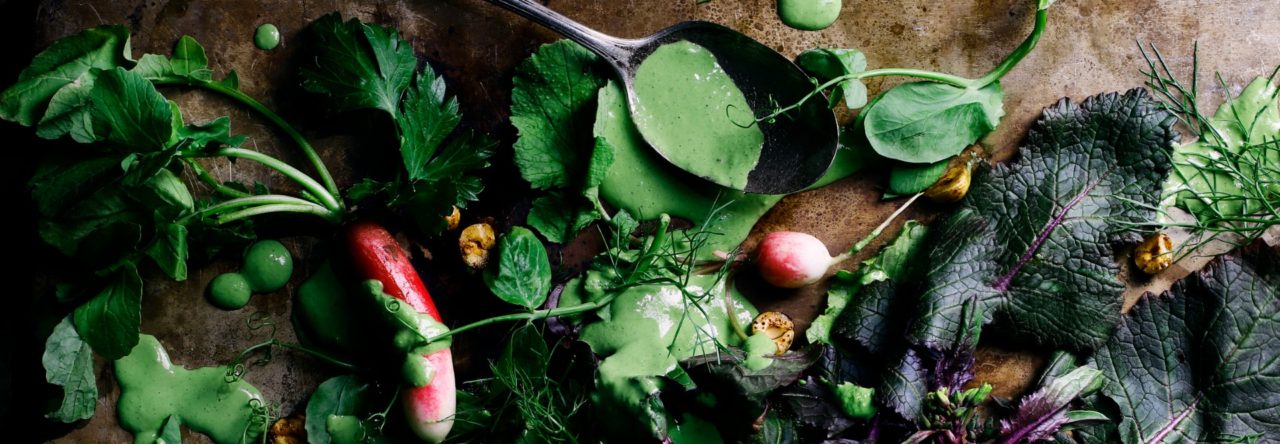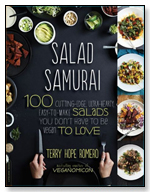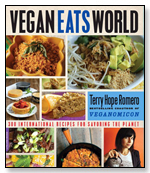Cultured cashew herb & shallot spread
Makes about 1 1/2 cups of cashew spread
A few vegan food friends and I started experimenting with making cultured cashew spreads a while back with techniques borrowed from raw foodisms, and it was a revelation for us in the homemade vegan “cheese” making front. This spread is perhaps one of the easiest cultured vegan products you can make at home that’s also very satisfying, having a rich, tangy depth and subtle texture that’s difficult to achieve with just lemon juice or miso alone.
Adding gently sauteed shallots and chives to the mix reminded me of the luscious French-style cheese spreads my family would buy for special occasions. Not unlike that spread, this cashew cheese adds festive flair to any appetizer tray. Serve with toasted baguette slices alongside crisp cornichons (teeny French pickles) and olives for a regal “uncheese” plate to serve before French inspired meals.
Not unlike making homemade yogurt, this cheese needs to sit in a clean, relatively sterilized jar overnight to nurture the culturing process. I say relatively since unlike the precautionary steps used for canning jars, which will sit at room temperature for months, this cheese needs only a few hours outside and will be stored in a refrigerator afterwards, so we can relax when preparing this spread. What you will need to prevent any unwanted microscopic “guests” visiting your cheesy spread are perfectly clean, dry utensils including: a food processor or high-powered blender, rubber spatula, and a glass wide-mouth 1 pint jar (former pickle jars are ideal). I find that rinsing the insides of the jar, the food processor container and even the spatula in boiling water and letting everything air dry works just fine.
One more thing: if you own a yogurt maker (great for homemade soy yogurt and a cheap and easy find at yard sales), this is the ideal location for letting the cheese incubate overnight. Either load the spread into the supplied (cleaned) jars, or place a larger jar on it’s side. If you don’t have such a thing, wrap the jar in towels and store in a perfectly draft-free, warm location that hovers at least 80 up to about 95 degrees: typically the inside of the oven or microwave with a pilot light on (but not set to bake or cook!) works great.
Ingredient tip:
Probiotic powder is most commonly available in capsule form and sometimes in loose powder. Look for it in natural food stores, sometimes stored in the the refrigerator case. To use, carefully break open 3 to 4 capsules and measure out the powder; don’t worry if you use slightly more than 1/2 teaspoon. Make sure your probiotic powder in whatever form is dairy-free and does not contain gelatin if in capsule form.
Avocado oil is a rich, neutral tasting oil that adds a buttery character to this spread and found typically in natural food stores. Mild virgin olive oil or grapeseed oil can be used in place of avocado oil.
- 1 1/2 cups unroasted, unsalted whole cashews
- 4 teaspoons yellow (or any light-colored) miso paste
- 1/2 teaspoon probiotic powder
- 2 tablespoons avocado, light olive or grapeseed oil
- 2 tablespoons finely minced shallots (about 1 very large shallot)
- 1 tablespoon lemon juice
- 1 clove garlic, chopped
- 1/4 teaspoon sea salt or to taste
- 3 tablespoons finely chopped chives or parsley
1. Soak the cashews covered in 3 inches of warm water overnight or until completely soft and pliable. Drain the water but set aside 1/4 cup. In a food processor or Vitamix-style blender, pulse the cashews, miso, probiotic powder, and 2 tablespoons of water to form a very thick paste. Occasionally scrape the sides of the container down and pulse, making sure to eliminate any stray chunks of cashew. The mixture should resemble a very thick, smooth hummus. If too thick, add one tablespoon of reserved water, pulse and scrape the mixture again until the desired consistency is reached. Don’t add too much water initially; you don’t want the spread to become a dip, so go easy on the water at first and keep scraping and pulsing the mixture to get it as smooth as possible.
2. Wash and rinse the insides of a 1 pint (2 cup) wide mouth glass jar with boiling water. Let it dry completely, then using a very clean rubber spatula transfer the cashew mixture to the jar, tapping it a few times on a countertop to release any large air bubbles. Use a rubber band to secure a double layer of clean cheesecloth on top of the jar. Bundle up the jar in a thick towel (a big, clean bath towel is ideal) and place the jar in a warm and draft-free location; an oven with the pilot light on works, but a warm closet works just as well. Leave the jar alone for about 10 hours. The spread should now have a sharp but pleasant smell, have increased slightly in volume by developing some air bubbles and have a creamy beige color. The top layer may look a little darker (having dried slightly with air contact), but that’s okay.
3. In a small skillet heat the avocado oil over medium-low heat. Saute the minced shallots for 5 minutes or until very soft and gently browned, then turn off the heat. Transfer the cashew mixture to the food processor/blender once again and add the lemon juice, garlic, and salt. Pulse and scrape to blend these ingredients thoroughly into the spread. Taste and add more lemon and salt if needed (you may not). Now add the shallots, taking care to include all of the avocado oil and add the chopped chives. Pulse only just enough to mix in the shallots and herbs. Use a rubber spatula to scrape the spread into a shallow serving bowl or large ramekins (perfect for serving the spread “crock” style), cover tightly with plastic wrap and chill at least 3 hours to blend the flavors. The flavor will continue to improve as the spread mellows in the refrigerator; stored chilled, the spread will last for at least a week.








